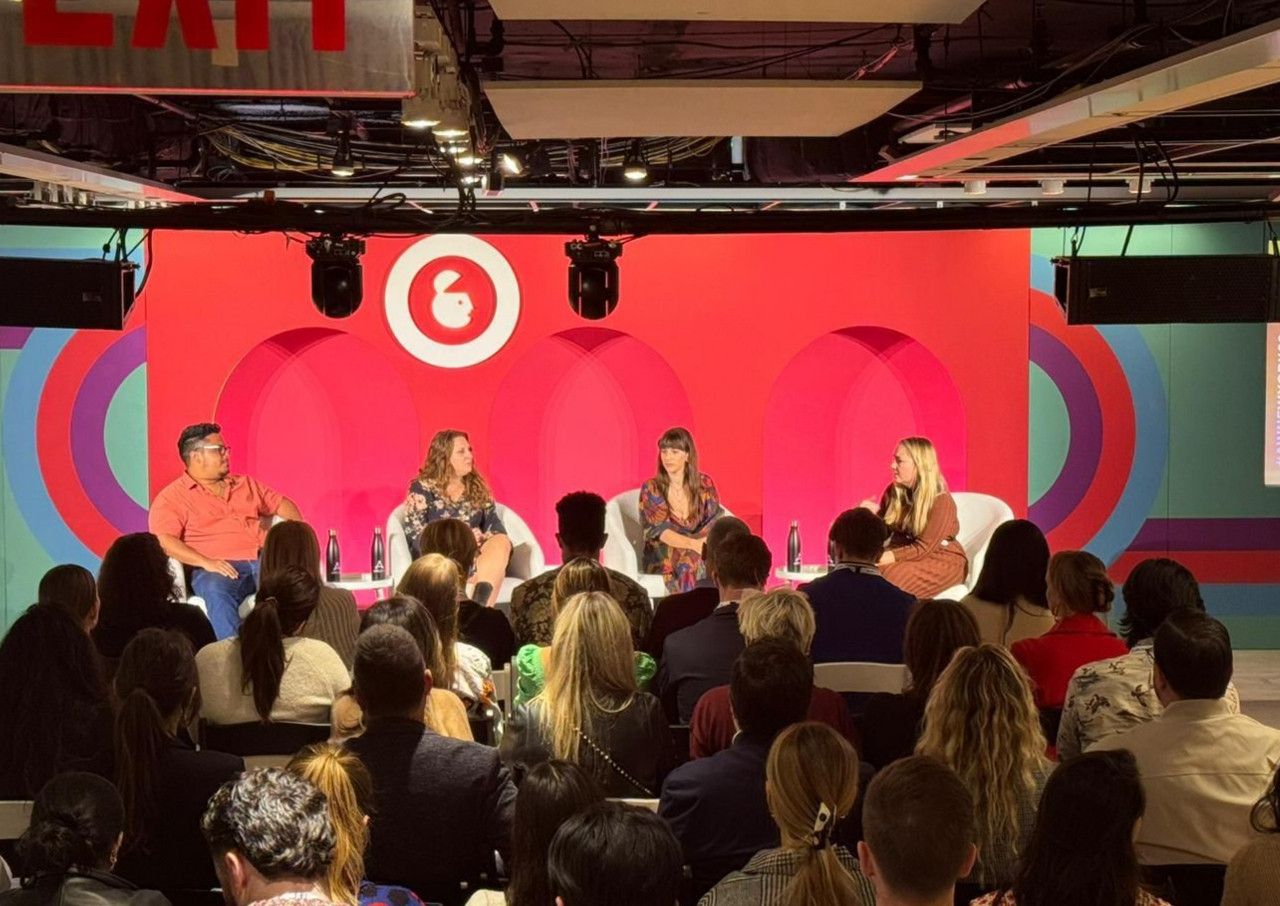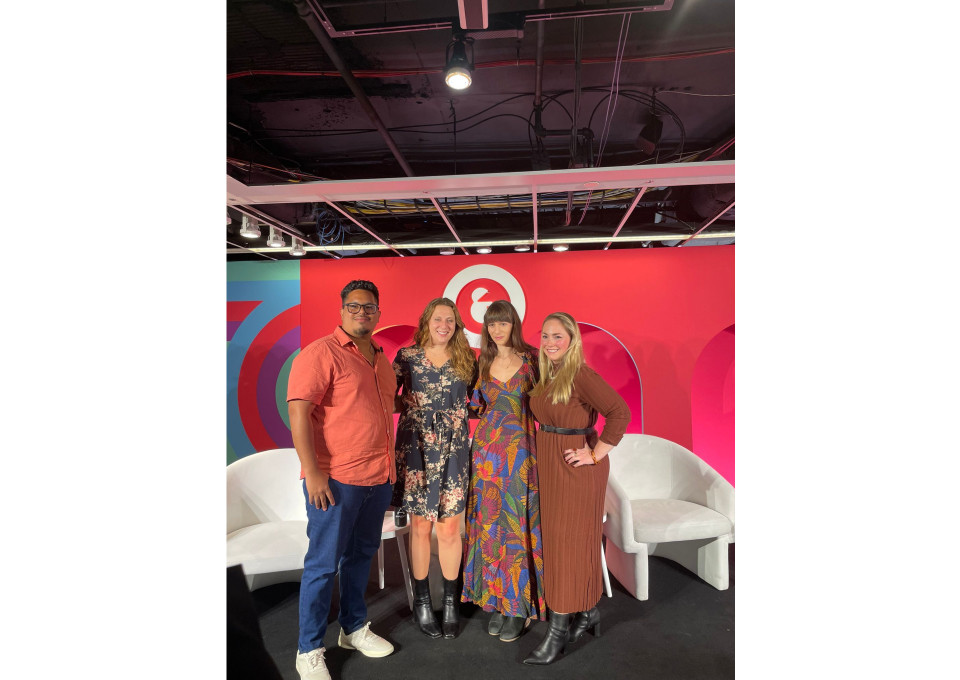
Just how can PR and comms practitioners work in a more constructive way with journalists to not only ensure great coverage for clients, but storytelling that is meaningful and relevant to media?
Our packed panel at Advertising Week New York brought together experienced journalists to discuss the kind of pitches from adland that would catch their interest. The panel included Brian Bonilla, Agency Reporter at Ad Age, Emma Goldberg, Business Reporter at The New York Times and Alison Weissbrot, Editor-in-Chief of Campaign U.S. and was chaired by Propeller VP U.S., Mary Cirincione.
Describing what kind of stories had appeal, Emma said: “I think what really makes a story come alive is talking to people who are affected by it, capturing their experiences with color and a kind of dynamism, and personally, that’s also my favorite part of the reporting process—Just getting to ask people, like, what does this mean to you, and tell me about how this trend or, you know, event, has showed up in your daily life?”
Alison stressed that from the trade publication perspective it’s much better if a story ties back to a bigger business or societal trend, as that always makes it more interesting. “It’s a little less like, ‘hey, here’s our new hire. Here’s our new campaign’ And it’s more like what does this mean for the broader world that we live in?”
And the ‘why now’ is very important to Brian, who added: “AI is like the big topic, right? But now that it’s been written about so many times, what’s the new lens that you’re going to put on it? You don’t want to have the same opinion or same thought [presented] over and over again.” In other words, you need that extra something.
Do your homework
The chances of getting attention are better if a PR team understands the deeper levels of their story. Brian said that very rarely do journalists just want the information that’s in the press release and said: “A mistake is sending a press release and thinking ‘that’s it’. Some of the best PR people are informed on the topic they are pitching.”
Emma added that the emails she is more likely to read show that the sender “has really engaged with my coverage, with my team’s coverage and the Times coverage more broadly.”
She urged PRs to make sure they understood the nuances of a trend, such as ‘quiet quitting, where research data on worker engagement shows it’s not as prevalent as social media makes it out to be.
Alison added that “I think respecting when ‘no’ is the answer and then also just like honing your pitch a little bit just to make sure it’s for the right person at the right time is really useful.”
She added that she was more likely to respond to people who had taken the time to build a relationship with her – maybe with a coffee chat or saying ‘hi’ at an event.
They all stressed how busy their roles can be and that PR people should understand the context in which they are operating and not expect instant responses. Brian pointed out that for exclusives they need enough time to read the pitch, digest it, and respond to it. “If you give us an exclusive that’s like at 3pm on Thursday, I’m probably not going to get to it even if I wanted to.”
Access all areas
The panel was keen to stress they want to hear from new voices within agencies and solutions providers rather than just be pitched the C‑suite. It’s understood that senior executives are media-trained and “sometimes prevents us getting deeper.”
Brian said: “Don’t be afraid to throw out a different voice because we’re [already] familiar with the CEO of your company probably, but maybe there’s a voice out there in your company that’s more informed – there’s so much, there’s [only] so much that CEO can do, right? If there’s someone within your company that actually knows the topic a little bit better, and hasn’t been mentioned a lot, I would prefer that source.”
They would particularly like access to younger members of staff and, of course, more diverse voices. Alison said that it as important to be able “to get inside of the companies and work with the people who are day-to-day and on the ground”, while Emma pointed out that she and her colleagues make an effort to track the demographics of the people we’re speaking with to make sure they are speaking to women, to people of color, and to young people of all different ethnicities, religions and geographic backgrounds.
“When pitches reflect that effort to bring in diverse voices, that’s something I really appreciate.”
The panel tackled some misconceptions about their coverage and that they might have ‘favourites’ among companies. They denied that companies receive special treatment, but ones creating cool ‘stuff’ had a good story to tell – Brian added: “Sometimes certain companies are good at finding new angles within their agency that other agencies aren’t as good at.”
Emma picked up on the topic and said that she was always looking for businesses that were one step ahead of culture “and kind of meeting the moment in a way that then catches the eyes.” She added that she actively looked for the businesses that are not yet getting media attention she felt people should know about.
Show the agency’s vulnerabilities
There was agreement that journalists would find honesty about mistakes and insights into the inner workings of campaigns very interesting. Alison said she found the majority too afraid to say anything beyond “here’s the perfect video” and added: “I think that we could learn more from each other if we were able to admit some of our mistakes more. Maybe that’s even a campaign that came out three years ago and now you’re not so close to it that you can go back and behind the scenes and dive into how it came together.”
Emma added: “I think like some of the most interesting stories really live in that tension where people are empowered to speak really openly and vulnerably and also just get away from like the jargon – not just focusing on finished projects or campaigns and things that went off without a hitch, but where the tensions and the challenges were.”
And Brian pointed out that journalists will go around someone who is overly-media-trained to find sources that are more honest about the story – so it’s better to provide the real answers in the first place.
As a final call to action the panel did make a plea for the ad industry at large to subscribe to their publications and support journalism, so they can provide the in-depth, credible coverage the advertising industry deserves.
